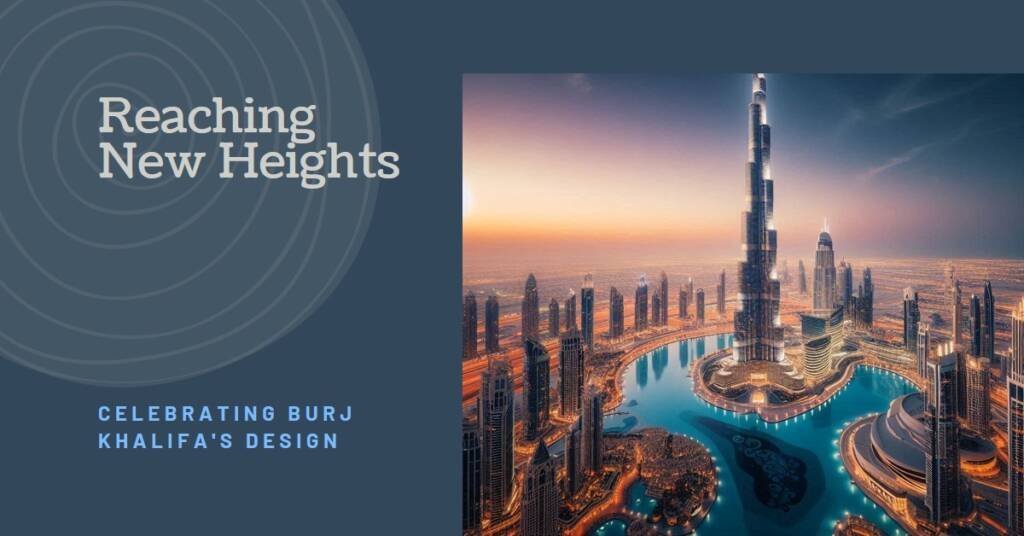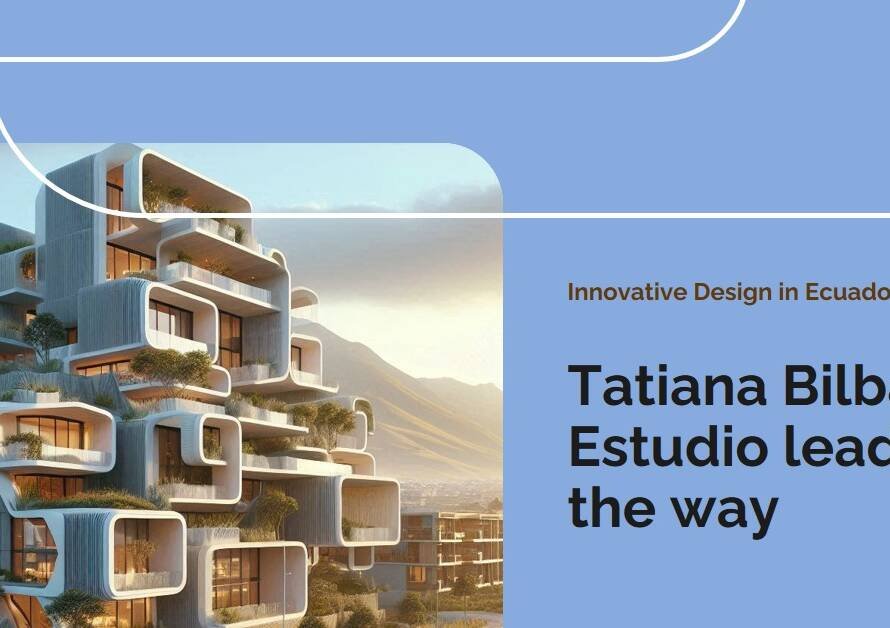
Table of Contents
Introduction to Architectural Marvels
Architectural marvels stand as testaments to human ingenuity and the relentless pursuit of innovation. These structures not only serve as functional spaces but also embody the convergence of design, engineering, and artistic vision. An architectural wonder, like the Burj Khalifa, transcends its practical use to inspire awe and admiration, becoming a symbol of cultural identity and advancement. The significance of such landmarks goes beyond their physical dimensions; they reflect the aspirations and technological capabilities of the society that creates them.
The essence of architectural marvels lies in their ability to redefine what is possible in construction and design. Buildings that achieve this status often incorporate cutting-edge engineering techniques, sustainable practices, and aesthetic considerations that challenge conventional perceptions of architecture. Innovative designs can transform urban landscapes while addressing practical demands such as space optimization, energy efficiency, and safety. Each architectural masterpiece tells a unique story, a narrative imbued with the hopes and dreams of its creators.
The Burj Khalifa is a prime example of such a marvel, reaching unprecedented heights and embodying the latest advancements in engineering. Completed in 2010, it not only surpassed other skyscrapers in height but also showcased innovative technologies that have become benchmarks in the industry. This remarkable structure captures the imagination of both engineers and the public alike, symbolizing the capabilities of modern architecture. It serves as a vital point of reference for future architects and engineers, inspiring new designs that push the boundaries of what is achievable in tall structures.
In an era where urbanization is rapidly increasing, the demand for innovative solutions in architecture is paramount. The Burj Khalifa, along with other architectural marvels, emphasizes the importance of visionary thinking in designing buildings that resonate with contemporary society while addressing future needs. As we explore these extraordinary structures, it becomes clear that they are much more than their physical forms; they are reflections of our collective ambition and inventive spirit.
Overview of the Burj Khalifa
The Burj Khalifa, standing at a breathtaking height of 828 meters (2,717 feet), holds the record as the tallest building in the world since its completion in 2010. Located in the heart of Dubai, United Arab Emirates, this architectural marvel represents a blend of art and engineering. The structure was designed by the renowned architectural firm Skidmore, Owings & Merrill, with Adrian Smith serving as the lead architect. Its unique design, inspired by Islamic architecture, incorporates ideas from desert flowers and the region’s traditional architecture while also exhibiting a modern aesthetic.
Construction of the Burj Khalifa began in 2004 and took approximately six years to complete, showcasing a remarkable feat of engineering and large-scale construction techniques. The building features 163 floors above ground, in addition to two basement levels. One of its most notable characteristics is the triple-lobed footprint, which maximizes views of the surrounding landscape while providing stability against the effects of wind. The Burj Khalifa not only houses luxury apartments and corporate suites but also includes the exclusive Armani Hotel, established by the famous fashion designer Giorgio Armani.
The significance of the Burj Khalifa extends beyond its impressive height; it symbolizes the rapid development of Dubai as a global city. This skyscraper, attracting millions of tourists each year, has become an icon of modern architecture and innovation. The use of cutting-edge materials, such as reflective glazing and high-performance concrete, exemplifies advancements in construction technology. The Burj Khalifa also features observation decks that offer stunning panoramic views of Dubai’s skyline and its surrounding desert. Its presence in Dubai serves to illustrate how bold aspirations, when combined with advanced engineering and design, can lead to monumental achievements in the field of architecture.
Engineering Innovations Behind Burj Khalifa
The Burj Khalifa, standing at an impressive height of 828 meters, is not only a symbol of Dubai’s ambition but also a testament to the advancements in modern engineering. Central to its construction are groundbreaking techniques that have redefined architectural standards. One major innovation is the utilization of high-strength concrete, which enabled the creation of a structure that could withstand the immense pressure exerted by its own weight. This concrete, composed of a special blend of materials, offers superior durability and compressive strength, allowing for an agile buildup of the tower’s height.
The structural design of the Burj Khalifa is another integral aspect contributing to its stability and height. The building employs a three-lobed footprint, which provides an efficient structural form that resists lateral forces such as wind. The central core serves as a backbone for the tower, bracing it against harmful stresses and contributing to its overall integrity. This design minimizes the amount of material required while optimizing the spatial layout, highlighting the sophisticated approach engineers took during its conception.
Throughout the construction of Burj Khalifa, engineers encountered numerous challenges, including extreme weather conditions and logistical complexities. They employed state-of-the-art technologies, such as computer-aided design (CAD) software, to meticulously plan and simulate the construction processes. Moreover, the iterative testing of materials ensured that all components would perform adequately under the building’s unique circumstances. These engineering innovations do not only mark a milestone for the Burj Khalifa but also set new benchmarks in the field of structural engineering, fostering a legacy of creativity and innovation that continues to inspire future projects worldwide.
Architectural Design and Inspiration
The Burj Khalifa stands as a remarkable testament to modern engineering and architectural prowess, seamlessly merging innovative design with cultural inspirations. Designed by Adrian Smith of Skidmore, Owings & Merrill, this iconic skyscraper reaches a staggering height of 828 meters, making it the tallest building in the world. The architectural concept was inspired primarily by traditional Islamic architecture, which is evident in its sophisticated design elements and overall structure.
The building’s shape is derived from the patterning systems of Islamic art and architecture, specifically the elongated structure of a minaret. This design not only enhances the aesthetic appeal of the Burj Khalifa but also increases its stability in the face of strong winds and other environmental challenges. The three distinct sections of the tower taper as they ascend, symbolizing both the growth and development of Dubai itself, while the setback design creates a spiraling form that is not only visually striking but also functional.
In addition, the exterior of the Burj Khalifa is clad in reflective glass and metallic elements, which contribute to its shimmering façade. This choice of materials serves to reflect the desert sun, while simultaneously providing a modern twist on the region’s architectural heritage. The careful blend of contemporary styling with references to the past allows the Burj Khalifa to resonate deeply with both locals and visitors. Aesthetically, it embodies a harmonious unity between form and function, and culturally it tells a story of a city that embraces its roots while reaching towards the future.
Thus, the Burj Khalifa is not merely an architectural marvel; it embodies the aspirations of a nation striving for excellence and innovation, deeply rooted in the elegant complexities of Islamic architectural traditions.
Construction Challenges and Triumphs
The construction of Burj Khalifa, the tallest building in the world, presented a multitude of challenges that tested the capabilities of engineers and construction teams. Logistical difficulties were among the foremost hurdles, as the project required the seamless coordination of a vast array of materials and workforce from different parts of the world. Given the project’s immense scale, managing the heavy machinery and materials necessitated careful planning to ensure timely and efficient transportation to the site. The use of cutting-edge software for planning and logistics was crucial in navigating these complexities, demonstrating an innovative approach to project management.
Safety concerns also loomed large during the construction phase. Working at exceptional heights and in challenging conditions necessitated the implementation of rigorous safety protocols. Workers faced potential hazards associated with high-altitude construction, including wind speeds and unforeseen weather events. To address these issues, engineers incorporated advanced safety measures into the design and construction process. Comprehensive training programs for the workforce and strict adherence to safety standards were instrumental in minimizing risks and accidents. These precautionary measures highlighted the commitment to preserving human safety, even in an ambitious undertaking like Burj Khalifa.
Environmental concerns presented yet another significant challenge. The construction of such an iconic structure raised questions about sustainability and energy efficiency. To confront these issues, the design team invested in innovative solutions to reduce the building’s carbon footprint. For instance, a sophisticated cooling system and energy-efficient materials were incorporated to minimize energy consumption. Furthermore, special attention was paid to the water conservation practices during construction. The efforts to embrace environmentally friendly practices reflected a responsible approach to modern engineering, ensuring that Burj Khalifa would stand not only as a marvel of architectural achievement but also as a testament to sustainable development.
Sustainability Features of Burj Khalifa
The Burj Khalifa, as an emblem of modern engineering, integrates numerous sustainability features that reflect a commitment to eco-friendliness. Its energy-efficient design employs a central core that minimizes the amount of material used while maximizing structural stability. This strategy significantly reduces the building’s overall carbon footprint, as less resource-intensive materials contribute to lowered energy consumption during construction and operation.
Water conservation is another critical aspect of the Burj Khalifa’s design. The skyscraper utilizes a sophisticated system that reclaims and treats wastewater for irrigation and plumbing purposes. This approach reduces the demand on the local water supply, which is particularly essential in the desert climate of Dubai. Additionally, rainwater harvesting systems are incorporated, ensuring that even during rainfall, the building can effectively collect and manage water resources.
The Burj Khalifa also showcases a commitment to sustainable materials. The construction process prioritized the use of locally sourced materials, minimizing transportation emissions and supporting the regional economy. Furthermore, many of the building’s components are recyclable, promoting the concept of a circular economy. This approach to material selection not only boosts the sustainability profile of the building but also sets an example for future urban projects.
In addition to its individual features, Burj Khalifa plays a significant role in promoting environmentally responsible construction practices. As one of the tallest structures in the world, it has set benchmarks for energy efficiency and green design in architectural developments. The building encourages other urban projects to adopt similar sustainable practices, encouraging a broader shift towards environmentally conscious construction in densely populated areas.
Cultural Impact of Burj Khalifa
The Burj Khalifa stands as a notable landmark, not only in Dubai but across the globe, symbolizing ambition and modern engineering prowess. Since its completion in 2010, this towering structure has come to represent a significant chapter in Dubai’s rapid development, emerging as an iconic emblem of the UAE’s aspirations. The architectural masterpiece attracts millions of visitors each year, making it a pivotal element in the cultural landscape. Tourists frequently flock to its observation decks to experience breathtaking views, solidifying its status as a must-visit destination.
Beyond tourism, the Burj Khalifa plays a vital role in major global events and advertising campaigns. It has been the backdrop for numerous celebrations, including New Year’s Eve fireworks displays that draw attention from around the world. These events not only enhance Dubai’s global profile but also promote the building as a stage for innovative light shows and artistic expressions. Such visibility has created enduring cultural associations, reinforcing the building’s stature as more than just a skyscraper but a beacon of creativity and human achievement.
The economic impact of the Burj Khalifa is significant. It has spurred growth in the tourism sector, boosting business for local hotels, restaurants, and shops, thereby contributing to the UAE’s economy. Furthermore, it has led to increased investments in surrounding areas, making it a transformative force in the development of Dubai’s urban landscape. As a cultural icon, the Burj Khalifa also shapes local culture, influencing art, media, and even social practices within the community. Overall, the Burj Khalifa encapsulates a fusion of contemporary architecture and cultural evolution, serving as an enduring symbol of progress and innovation.
Future of Skyscrapers: Lessons from Burj Khalifa
The Burj Khalifa stands as a testament to the pinnacle of modern engineering and architectural feats, serving as an influential model for future skyscraper designs. Since its completion, the Burj Khalifa has inspired architects, engineers, and urban planners worldwide by demonstrating what is achievable when innovative materials and cutting-edge technologies are combined. As cities continue to grow vertically, the lessons gleaned from this iconic structure are invaluable for shaping the future of urban environments.
One of the primary lessons from the Burj Khalifa is the importance of adaptability in design. The skyscraper incorporates mixed-use spaces, including residential, commercial, and entertainment facilities, promoting vertical living and creating vibrant urban communities. This trend of integrated spaces signifies a shift toward sustainable living in metropolitan areas, encouraging dense yet livable environments. Architects and developers are now exploring similar concepts, employing designs that prioritize functionality and community engagement within tall structures.
Moreover, the use of innovative materials has played a crucial role in the Burj Khalifa’s success. The application of high-performance concrete and advanced facade systems has enhanced structural integrity while optimizing energy efficiency. Future skyscraper development will undoubtedly benefit from these material advancements, as architects strive to create eco-friendly buildings that minimize environmental impact while maximizing utility. As energy-efficient technologies continue to evolve, the integration of smart systems will further revolutionize how skyscrapers operate, promoting sustainability.
Finally, readiness to embrace new engineering methodologies, such as modular construction and prefabrication, will be essential. The Burj Khalifa’s construction showcased the benefits of meticulous planning and coordination, which are critical for any high-rise project. As urbanization intensifies, lessons from the Burj Khalifa can guide upcoming projects towards meeting the challenges of population growth, infrastructure demands, and resource management effectively.


Conclusion: The Legacy of Burj Khalifa
The Burj Khalifa stands as a monumental achievement in modern engineering and architecture, symbolizing the heights of human ingenuity and aspiration. Since its opening in 2010, this iconic skyscraper has not only redefined the skyline of Dubai but has also emerged as a global benchmark for architectural excellence. With its impressive height of 828 meters, the Burj Khalifa surpasses all other structures, embodying a combination of advanced engineering techniques and innovative architectural designs. As visitors observe its soaring presence, they are reminded of the endless possibilities inherent in the pursuit of progress.
Moreover, the Burj Khalifa serves as a cultural icon, reflecting the rich heritage and ambitions of the United Arab Emirates. The fusion of Islamic and modern design principles showcases a unique aesthetic that resonates with both local and international audiences, drawing millions of tourists each year. Beyond being a mere observation point or luxury residence, the building embodies a sense of pride for the people of Dubai and acts as a significant symbol of their dynamism and forward-thinking outlook.
Looking toward the future, the legacy of Burj Khalifa will undoubtedly influence the architectural landscape and engineering methods of upcoming skyscrapers. Its unprecedented height and the engineering milestones achieved during its construction serve as a guiding example for future projects globally. The Burj Khalifa’s success fosters a spirit of innovation that encourages architects and engineers to push boundaries and explore new capabilities in design and construction. Ultimately, the Burj Khalifa is not just a featuring aspect of Dubai; it is a monumental representation of modern aspirations, a testament to what can be achieved through vision and determination.



